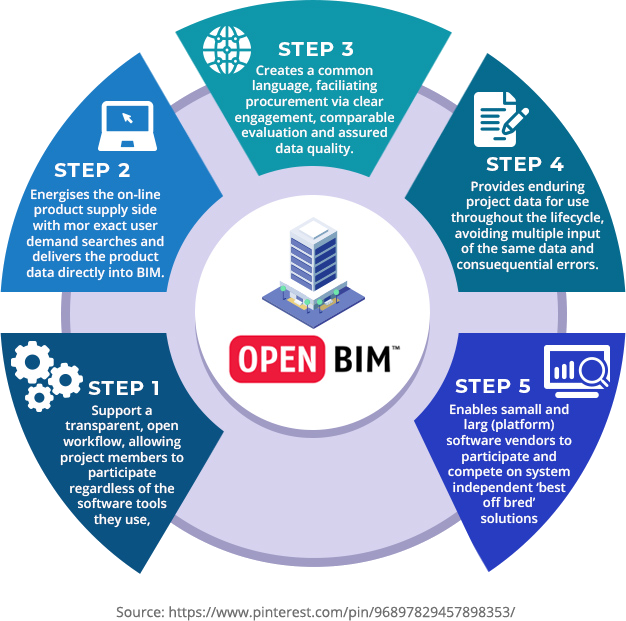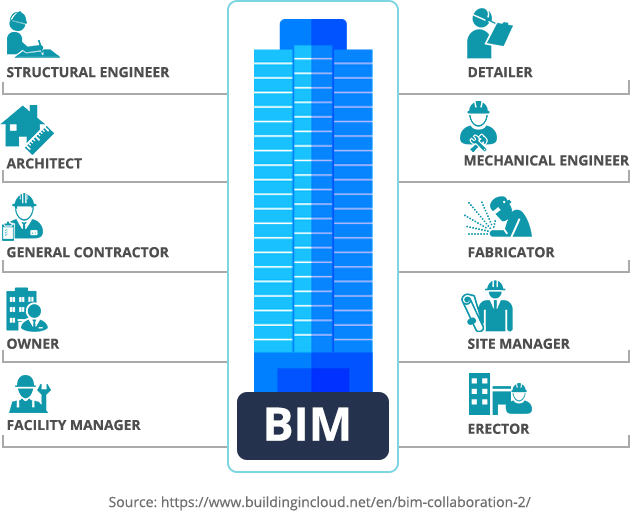National BIM Report 2018 says – there is an increase in BIM (Building Information Modeling) usage by 12% compared to 2017. No doubt, the AEC industry is moving toward adopting BIM in more number of projects and with confidence. Initially which was more of experimental or trial usage of BIM, now it’s more of informed decisions by contractors, architects, and real estate companies. Among these chapters of the BIM era, there is an important thing that has conceptualized BIM and the entire construction system revolves around this very element – ‘Collaboration.’
Collaboration among the engineering teams to smoothen the process of construction was what had paved the way for BIM. Moreover, the Open BIM or the open standards and workflows have given architects and BIM consultants the platform for collaborative thinking and innovation. There are debates about information security and customized building models for construction masterpieces through Closed BIM approach, however, Open BIM has earned its popularity by bringing flexibility and innovation to the engineering community.
Open BIM and Its Significance

Because of the enormous benefits in the form of pre-construction planning, design visualization, and cost/material estimation, etc. BIM has become the most popular construction management tool. But, most of the architects community agree that the true potential of BIM lies in leveraging ‘Open BIM.’
What is Open BIM
Open BIM is an approach to utilize and share the power of BIM through open exchange of design and non-design construction project information among project teams. From architects to contractors, MEP engineers, design consultants, and structural engineers get to exchange vital information before, during, and even after the project duration.
How Open BIM Works
As a flexible workflow, with Open BIM, all project members have the option to access and share project information such as design specifications, material takeoff and procurement details, cost estimation, and project milestones, etc. For example, if the design team has created a BIM model, the MEP clash detection team can be at par of the schedules and material procurement details to meet the project parameters in terms of cost and quality. The MEP team can import the BIM model to Revit MEP for better coordination and communication over the project.
Utilizing global standard protocols like Industry Foundation Classes (IFC), and Construction Operations Building Information Exchange (COBie), Open BIM allows sharing both geometric and non-geometric project information with ease. IFC standard allows to share all types of project information including the minute design details as well as non-technical project information. However, COBie has a few limitations when it comes to information exchange. Using COBie, the project teams can share only data related to facility management. Though there are a few limitations with these global standards, still they help in making use of the essence of BIM.
Closed BIM and Its Significance

Many think that Closed BIM has disadvantages when compared to Open BIM. However, the fact is Closed BIM also has the aim to make the best use of BIM – only the approach to it is a little different. Often termed as lonely BIM, the project team requires to use the same version of BIM application unlike Open BIM. For example, if the architect has used Autodesk Revit 4.0, the structural team and the MEP team has to use the same version of Revit and Revit MEP respectively. In a way, Closed BIM enforces to maintain and follow the same project standards and practices to avoid possible miscommunication. As a positive result, the project documentation is fully neat and easier to follow and maintain even after the project has completed years back.
Open BIM vs. Closed BIM in AEC Industry

Comparing Open BIM to Closed BIM, the AEC industry can evaluate both in terms of the following information pointers:
- Open BIM allows information sharing without the help of any proprietary software and irrespective of file formats unlike Closed BIM
- With Open BIM, true integration and collaboration of leading BIM software vendors providing a streamlined platform
- Utilization of designs and other key project information across multiple projects through Open BIM
- Though Closed BIM doesn’t support true integration, it helps in 100% error-free project management and documentation
Make the Best Use of BIM by Partnering with the eLogicTech Experts
Over the past few years, the AEC industry has started utilizing the technology elevation of BIM integration to cloud. Without the rigidity of workstations and drawing boards, the industry is slowly embracing the cloud-enabled building design process to deliver error-free projects within time and budget. eLogicTech being one of the pioneer BIM consultants has assisted businesses with both Open BIM and Closed BIM integration. Having two decades of industry experience, clients can avail the benefits of working with a team of architects and consultants who understands BIM in and out. So, if you have project that requires BIM adoption or technology integration, approach us and we’ll be at your service the earliest.









